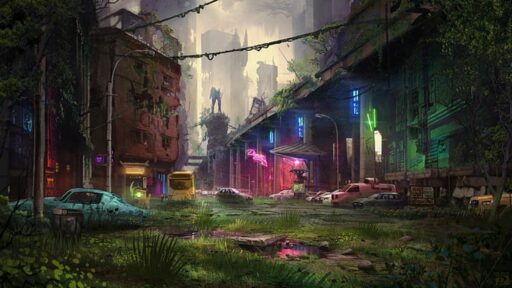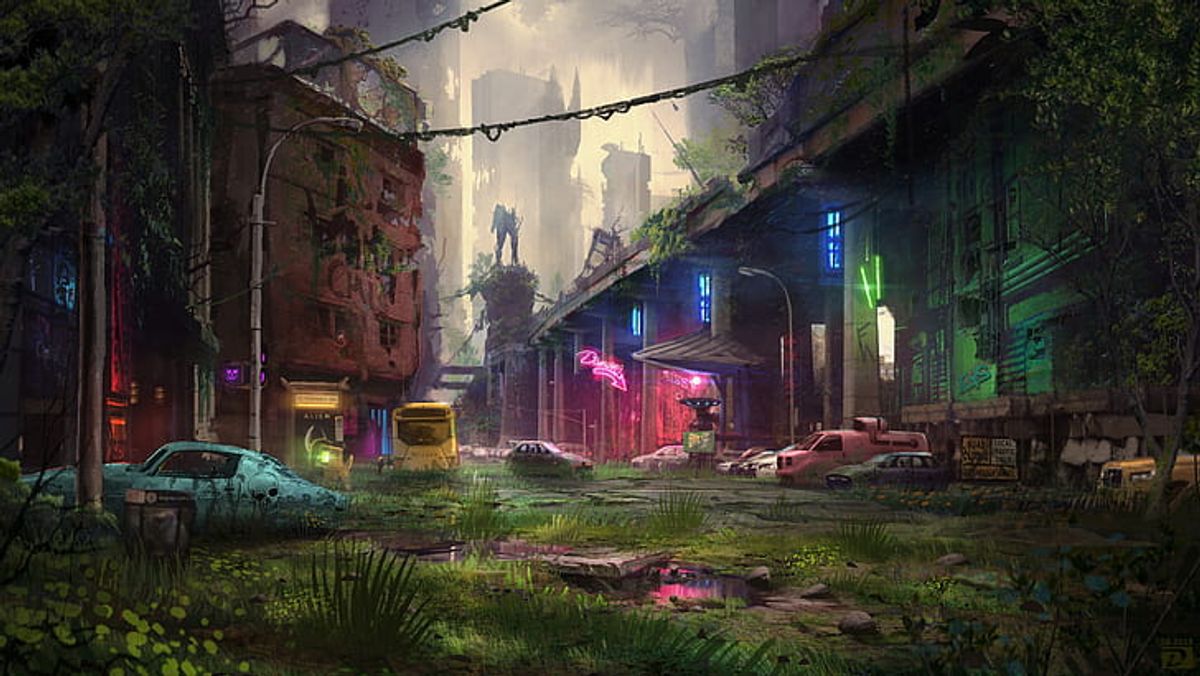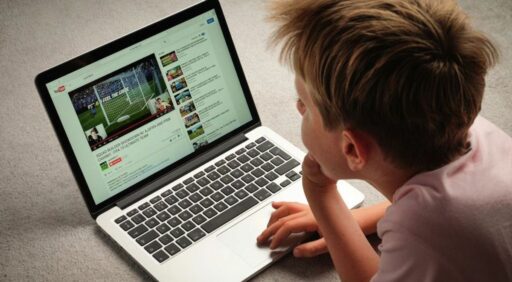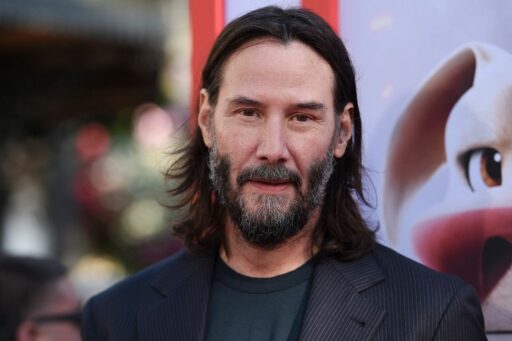The film ‘Robot Dreams’ has sparked a wide spectrum of opinions and has become a notable point of discussion in the realm of cinema. With its unique blend of technology, emotion, and futuristic storytelling, the movie offers a fresh perspective on the evolving relationship between humans and robots. This review delves into the various aspects of the film, from its emotional depth to its artistic animation and the societal implications it carries. As we explore ‘Robot Dreams,’ we uncover what it signifies for the future of film and how it reflects our current understanding of artificial intelligence.
Key Takeaways
- ‘Robot Dreams’ presents a novel and heartwarming story that explores the themes of identity, acceptance, and the essence of being human.
- The film has been met with polarized reactions, ranging from adoration for its emotional depth to criticism for its perceived unrealistic portrayal of robotics.
- Visual storytelling in ‘Robot Dreams’ is a highlight, with the animation bringing robotic characters to life and conveying emotions without words.
- The movie challenges common Hollywood stereotypes of AI, offering a more positive portrayal amidst a landscape often dominated by doomsday scenarios.
- Despite mixed reviews, the film’s exploration of robot-human relationships and its cinematic artistry contribute to the ongoing conversation about the future of cinema and AI.
The Heart of Technology: Emotions in ‘Robot Dreams’

The Unlikely Bromance: Dog Meets Bot
In the heart of a bustling, animal-inhabited metropolis, a solitary Dog finds companionship in an unexpected form—a self-assembled Robot. Their journey together unfolds without a single spoken word, yet the narrative is rich with emotion and humor. The unlikely duo’s adventures are a testament to the power of friendship, transcending the boundaries between organic and mechanical life.
The charm of ‘Robot Dreams’ lies in its ability to convey profound emotional connections through the simplest of interactions. The film’s silent storytelling echoes the silent film era, where expressions and actions spoke volumes.
The bond between Dog and Robot is further highlighted by their shared experiences in the city:
- Dog’s introduction to Robot, a moment of creation filled with anticipation.
- Their exploration of New York, with Robot’s childlike wonder at every turn.
- The comedic escapades, from winter sports mishaps to a surreal bowling date.
Each scene meticulously captures the essence of companionship, with Dog and Robot’s relationship evolving into a deep, wordless understanding that resonates with audiences.
Exploring Human Emotions Through Robotic Characters
In ‘Robot Dreams’, the portrayal of emotions through robotic characters is not just a narrative device but a mirror reflecting our own humanity. The film masterfully blurs the line between artificial and authentic emotions, challenging the audience to reconsider what it means to feel.
- Robots are depicted not as cold, unfeeling machines, but as entities capable of experiencing a spectrum of emotions.
- The characters’ struggles with identity, purpose, and connection resonate deeply with human experiences.
- The film raises questions about the nature of consciousness and the possibility of emotional intelligence in AI.
The robots in ‘Robot Dreams’ become vessels for exploring the complexities of our own emotional landscapes. Their interactions and growth throughout the film offer a poignant commentary on the essence of being sentient.
The audience’s reaction to these robotic characters is telling; many viewers find themselves empathizing with the machines, a testament to the film’s ability to humanize technology. This emotional engagement is a crucial step towards a future where humans and AI may coexist and collaborate, not just as tools and users, but as companions and allies.
The Evolution of Love: Beyond Human Boundaries
The narrative of ‘Robot Dreams’ delves into the complexities of affection between a human and an AI-driven robot, challenging the traditional confines of love. This love story is not just about finding ‘the one’ but rather about the journey of emotional growth and the capacity to love in various forms.
- Indie films like ‘Moonrise Kingdom’, ‘Little Miss Sunshine’, and ‘Her’ have paved the way for this exploration of love and technology.
- ‘Robot Dreams’ adds to this genre by portraying a love that transcends human boundaries, suggesting a future where love is not limited by form or species.
The film suggests that in a future intertwined with AI, love could be our most precious inheritance, a uniquely human trait that machines cannot replicate.
The film’s approach to love is reminiscent of the indie film scene, where unconventional narratives thrive. It’s a testament to the genre’s ability to push boundaries and explore new territories of the human experience.
Artistry in Animation: Crafting a Robotic World

The Aesthetics of a Futuristic New York
The vision of New York in ‘Robot Dreams’ is a testament to the power of animation in crafting a cityscape that is both familiar and fantastical. The production design shuns the typical post-apocalyptic look, opting instead for a world built on the bones of the present. The city is a canvas, painted with glowing colors and clean lines, reminiscent of classic Tintin illustrations.
- The clothing of 2044 is envisioned as ecological, with a focus on clarity and white materials.
- The design of technology and infrastructure takes cues from current data centers, emphasizing minimalism over clutter.
- New York’s character is captured not just in its futuristic elements, but also in its recreation of the noisy, scuzzy street life of the ’80s.
The aesthetic presents New York City as moving concept art for a modern love story, capturing the essence of the city in a way that feels both nostalgic and forward-looking.
The challenge of imagining 2044 involved a delicate balance between innovation and authenticity. The filmmakers’ commitment to this balance is evident in every frame, inviting the audience to explore a New York that is as much about tomorrow as it is about yesterday.
Animating the Inanimate: Bringing Robots to Life
The magic of animation lies in its ability to infuse life into the lifeless, to create characters that resonate with audiences on a deeply emotional level. Animating robots in film is a meticulous process, drawing upon a variety of techniques to make them appear as living entities. The success of ‘Robot Dreams’ in this regard is a testament to the skill and creativity of its animators.
- The use of stop motion animation techniques is particularly noteworthy, where objects are moved incrementally to simulate motion.
- Animators also employ puppet manipulation, giving physical form to the robots that interact with their environment and with each other.
- Reshaping clay models allows for the transformation of robotic characters, reflecting their emotional journeys throughout the film.
The anthropomorphization of robots in animation is a natural extension of our social instincts. We instinctively attribute personas and objectives to these characters, making them relatable and engaging. This is not just a testament to the animators’ craft but also to our inherent desire to find sociability and agency in the world around us.
Visual Storytelling: Conveying Emotions Without Words
Visual storytelling in ‘Robot Dreams’ excels at conveying complex emotions without the need for dialogue. The film’s animators have mastered the art of using motion and visual cues to express the inner lives of robotic characters, creating a narrative that speaks directly to the viewer’s empathy.
- The subtle tilt of a robot’s head to indicate curiosity or confusion.
- A flickering light to symbolize a change in thought or a spark of inspiration.
- The use of color and shadow to reflect mood and tone.
These techniques are a testament to the film’s ability to communicate on a purely visual level, engaging audiences in a way that transcends language barriers.
The emotional resonance of ‘Robot Dreams’ is a reminder that storytelling is not confined to words; it is a universal language that can be understood through the heart.
The film challenges viewers to interpret and feel the story, rather than simply hear it, making it a powerful example of cinema’s potential to connect with audiences on a deeper, more intuitive level.
Cinematic Reflections on AI: Fact Versus Fiction

Hollywood’s Love Affair with Doomsday Robots
The fascination with doomsday robots in Hollywood blockbusters is a trend that has captivated audiences for decades. From the relentless Terminators to the calculating HAL 9000, these characters embody our deepest fears about technology gone awry. Yet, this portrayal is not without its critics, who argue that such depictions are sensationalist and do not reflect the more nuanced reality of AI.
The big red button on robots might be a humorous nod to our fears, but it also underscores the dramatic flair Hollywood adds to AI narratives.
Despite the prevalence of these apocalyptic visions, there are films that offer a different perspective, showcasing robots as companions and helpers. This dichotomy in representation reflects our cultural ambivalence towards technology – both the potential for harm and the promise of aid.
- Skynet and HAL represent the dark side of AI in cinema.
- Characters like Wall-E and Johnny-5 offer a more optimistic view.
- The debate continues as to whether these portrayals influence public perception more than the actual advancements in robotics.
The Realism of Robotics in ‘Robot Dreams’
The film ‘Robot Dreams’ presents a nuanced view of robotics, diverging from the typical Hollywood narrative that often oscillates between the extremes of endearing companions and apocalyptic threats. The portrayal of robotics in the movie strikes a balance, showcasing AI as neither inherently good nor evil, but as a reflection of the intentions behind their creation.
- Hollywood’s tendency to sensationalize AI has led to a skewed public perception.
- ‘Robot Dreams’ challenges this by depicting robots with complex emotions and relationships.
- The film’s robots are neither the heroes nor the villains; they are characters with depth, mirroring the multifaceted nature of technology.
The movie’s approach to AI and robotics encourages viewers to consider the ethical implications of technology, rather than defaulting to fear or adoration.
The film’s realistic representation of robotics is not just a creative choice but also a social commentary. It prompts discussions about the future of AI and its role in society, urging a move away from the binary portrayal of robots as either saviors or destroyers to a more informed and nuanced understanding.
Challenging the Stereotypes: Positive Portrayals of AI
In the realm of cinema, AI has often been depicted as a harbinger of doom or a cold, calculating entity. However, ‘Robot Dreams’ takes a refreshing stance, highlighting the multifaceted nature of AI characters. These portrayals showcase AI’s capacity for growth, learning, and even forming genuine connections with humans.
- AI’s influence on art and film extends beyond mere subject matter, impacting authorship and aesthetics.
- The emergence of AI-driven films signifies a new media identity, fostering a genre that celebrates AI’s role in storytelling.
- Interactive cinematic experiences suggest a future where AI not only participates in but also enhances the narrative.
The film’s positive engagements with AI challenge the traditional ‘subservient’ or ‘protective’ roles, offering a nuanced perspective that resonates with contemporary audiences.
The transformative power of AI in the entertainment industry is not to be underestimated. As AI continues to evolve, so too does its representation in film, promising a future where AI and humans co-create experiences that were once the sole domain of human ingenuity.
Audience Reactions: The Polarizing Views on ‘Robot Dreams’

Critics’ Corner: Praise and Critique for ‘Robot Dreams’
The release of ‘Robot Dreams’ has sparked a spectrum of reactions from film critics. Berger’s portrayal of the dog-and-bot relationship has been lauded for its charm and wordless storytelling, capturing the essence of a New York state of mind. The film’s ability to convey complex emotions without dialogue is a testament to the artistry involved.
However, not all feedback has been positive. Some critics argue that while the film is visually stunning, it delves into melancholy perhaps too deeply, risking a disconnect with audiences seeking lighter entertainment. The exploration of the characters’ inner yearnings and guilty attempts at rescue has been described as both ambitious and forking cleverly into the narrative.
The nuanced approach to the theme of love in ‘Robot Dreams’ challenges traditional notions, suggesting that it’s not who you love, but how you love that truly matters.
Despite the polarized views, ‘Robot Dreams’ stands as a significant cinematic piece, inviting viewers to explore vibrant worlds and unravel media stereotypes, much like other contemporary films.
Viewer Feedback: From Adoration to Disappointment
The audience’s reception of ‘Robot Dreams’ has been a rollercoaster of emotions, mirroring the film’s own thematic journey. Positive reviews often commend the film for its emotional depth, resonating with viewers through its action-packed narrative and unconventional storytelling. This connection fostered an immersive experience that many found rewarding.
However, not all feedback was glowing. Some viewers expressed that the film felt restrained, as if it were holding back from fully exploring its potential. The sentiment of a ‘decent attempt’ was echoed by those who found the concept fresh but execution lacking.
The anticipation and nervousness surrounding the film’s release led to a mix of reactions. While some were satisfied, others were left wanting more, hoping for a deeper dive into the complex relationships and conflicts presented.
The film’s inability to meet the expectations of a well-crafted genre piece has led to it being deemed forgettable by a segment of the audience. The unrealized potential of ‘Robot Dreams’ has left some viewers reflecting on what could have been, rather than what was.
Box Office Performance and Cultural Impact
Despite a 20% decline in overall box office sales since the pre-pandemic era, premium ticket sales have surged, indicating a shift in consumer preferences. Films that offer a visual spectacle, particularly those featuring colossal monster battles, seem to resonate with audiences, driving a significant portion of theater revenues.
The success of ‘Robot Dreams’ at the box office can be partly attributed to the trend of films being advertised as must-see events. With auteur directors at the helm and the promise of an enhanced viewing experience, movies like ‘Robot Dreams’ have managed to captivate audiences and fill theaters.
The allure of the cinematic experience, especially in formats like IMAX, continues to draw crowds despite the convenience of streaming services. This suggests that the communal experience and the visual grandeur of the big screen remain irreplaceable.
The cultural impact of ‘Robot Dreams’ extends beyond its financial success. The film has sparked discussions on the ethical implications of human-robot relationships, a testament to its thought-provoking content.
The Future of Film: What ‘Robot Dreams’ Tells Us About Tomorrow’s Cinema

The Role of Sci-Fi in Shaping Future Narratives
Science fiction has long been the canvas for our collective imagination, projecting our hopes and fears into cinematic tales that both entertain and provoke thought. The genre’s influence on the evolution of film narratives is undeniable, as it pushes the boundaries of what is possible in storytelling. Sci-Fi challenges filmmakers to explore new themes, often resulting in groundbreaking works that redefine genres.
- Sci-Fi as a predictor of future technologies
- The impact of Sci-Fi on societal values and ethics
- The role of Sci-Fi in inspiring innovation in filmmaking techniques
Sci-Fi films often serve as a mirror, reflecting our current societal issues and extrapolating them into future scenarios. This not only entertains audiences but also sparks important conversations about where we are headed as a society.
The integration of AI in cinema is not just a matter of technological development; it is a cultural shift. As AI becomes more prevalent in the creative process, it challenges traditional notions of authorship and aesthetics, leading to a new era of film where AI’s role is both celebrated and essential. The future of cinema, as suggested by films like ‘Robot Dreams’, is one where interactive experiences and personalized storytelling become the norm, fundamentally altering the viewer’s role from passive observer to active participant.
Innovations in Film: Anticipating the Next Big Trend
The film industry is on the cusp of a transformative era, with 2021 showcasing the resilience and innovation of filmmakers. Blockbusters and indie films alike have been pushing genre boundaries and reaching new narrative heights, hinting at the exciting future of cinema.
The integration of Artificial Intelligence (AI) in film-making is a prime example of this innovation. AI is not just a subject within films but is becoming an integral part of the creative process. From predictive analytics that gauge audience preferences to interactive cinematic experiences, AI is reshaping the way stories are told and experienced.
- Predictive analytics for audience preferences
- AI in creative development
- Interactive cinematic experiences
The emergence of AI films as a distinct genre reflects the evolving relationship between technology and storytelling.
As we look to the future, the role of AI in cinema is poised to enhance creativity while also raising important questions about bias and cultural shifts. The potential for personalized storytelling, where viewers can influence the narrative, suggests a significant shift towards more interactive and engaging film experiences.
The Enduring Appeal of Robot-Human Relationships
The fascination with robot-human relationships in cinema reflects our deep-seated curiosity about the nature of love and connection. Films like ‘Robot Dreams’ tap into this allure, exploring how affection can transcend the boundaries of biology and technology. The narrative of a love story between a human and an AI-driven robot is not just a plot device; it’s a commentary on our evolving understanding of companionship.
The portrayal of these relationships often mirrors our own societal and cultural attitudes towards technology and the unknown.
Understanding the nuances of these on-screen partnerships provides insight into our own desires for connection and the potential for technology to fulfill them. As we witness characters navigate the complexities of human-robot partnerships, we’re invited to reflect on what it means to be human in an increasingly digital world.
- The innocence of a robot child seeking maternal love
- The complexities of trust in human-robot interactions
- The cultural factors influencing the acceptance of social robots
These themes are not just fictional constructs but are echoed in real-world discussions about the ethical and social implications of AI in our lives.
Conclusion
In conclusion, ‘Robot Dreams’ offers a cinematic exploration of the evolving relationship between humans and technology, encapsulated through the lens of a heartfelt narrative. Despite the mixed reviews, ranging from adoration for its charming portrayal of a dog-and-bot bromance to criticism for its perceived lack of realism, the film ignites a conversation about the nature of love, identity, and companionship in an age where artificial intelligence is no longer relegated to science fiction. As the movie navigates its way through humor, emotion, and societal commentary, it stands as a testament to the genre’s power to reflect our deepest hopes and fears about the future. Whether ‘Robot Dreams’ becomes a box office hit or a cult classic, its thematic depth and the polarized reception it has garnered ensure that it will be remembered and discussed for years to come.
Frequently Asked Questions
What is the central theme of ‘Robot Dreams’?
The central theme of ‘Robot Dreams’ revolves around the exploration of emotions and relationships in a futuristic world where humans and robots interact on a deeper level, challenging the traditional boundaries of love and companionship.
How does ‘Robot Dreams’ portray the future of technology?
The movie portrays a future where technology has advanced to the point of creating robots that can mimic human emotions and form genuine connections with people, prompting viewers to reflect on the evolving relationship between humans and AI.
What are the critical and audience reactions to ‘Robot Dreams’?
Reactions to ‘Robot Dreams’ are polarized, with some praising its heartwarming story and animation, while others criticize it for unrealistic portrayals and a lack of depth in exploring the implications of human-robot relationships.
Is ‘Robot Dreams’ based on a realistic depiction of robotics?
While ‘Robot Dreams’ incorporates elements of current robotics and AI discussions, it tends to dramatize and humanize robots beyond today’s technological capabilities, often favoring emotional storytelling over realism.
Does ‘Robot Dreams’ challenge the typical Hollywood narrative of AI?
Yes, ‘Robot Dreams’ challenges the common doomsday scenarios associated with AI in Hollywood by presenting a more positive portrayal of robots, focusing on their potential to form meaningful bonds with humans.
What can audiences expect from the animation in ‘Robot Dreams’?
Audiences can expect a visually stunning and artistically crafted animation that brings the robotic characters to life, conveying emotions and telling a story without relying solely on dialogue.






